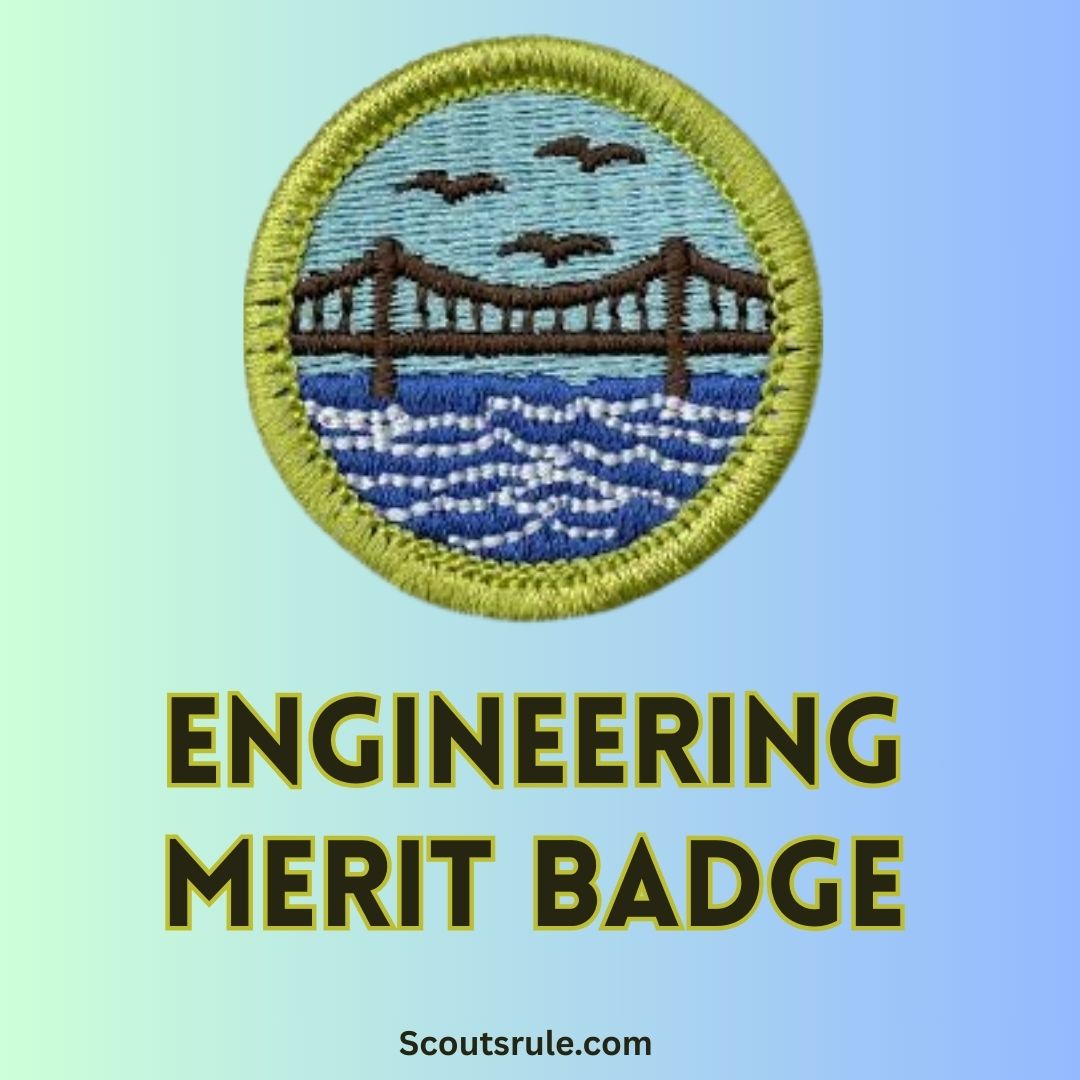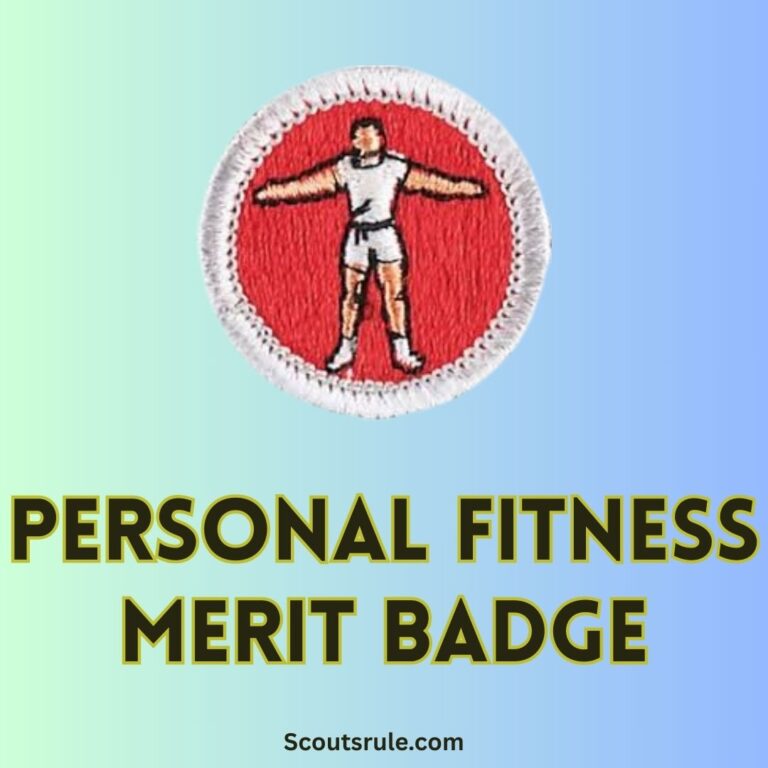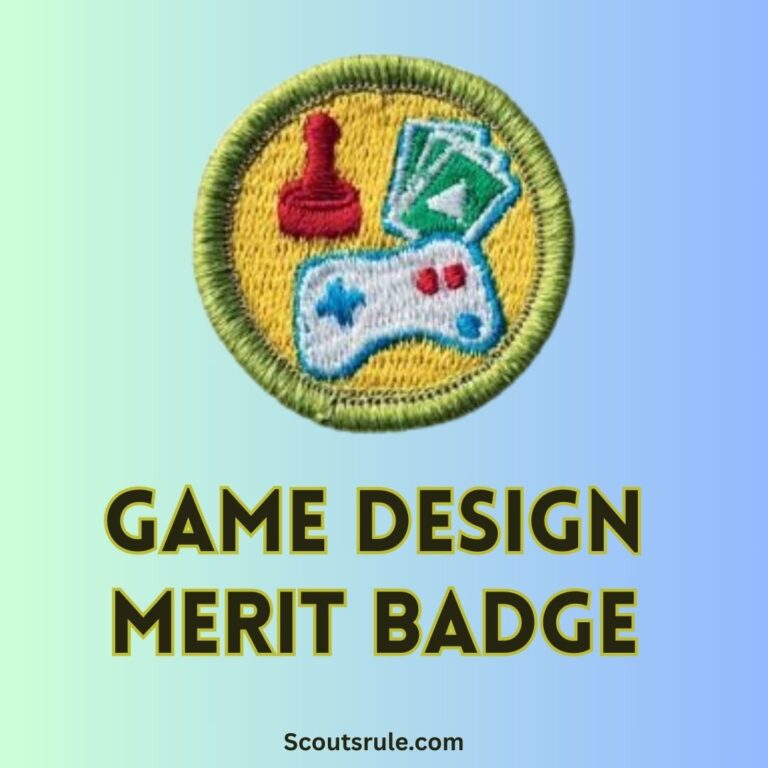
Engineering is the art and science of designing, building, and improving devices, systems, and processes. Through the Engineering Merit Badge, Scouts explore how materials and forces interact to create the devices and inventions that make modern life possible. This badge isn’t just about learning facts—it’s about discovering how creative problem solving, careful planning, and teamwork transform ideas into reality. From examining the intricate workings of a household appliance to understanding the ethical responsibilities that professional engineers adhere to, this award challenges you to think deeply about the impact of technology on society.
The badge is offered as a hands-on investigation into engineering principles. You’ll learn to ask critical questions like, “How does this work?” and “What engineering challenges had to be solved to create it?” Equipped with these insights, you’ll not only enhance your technical skills but also broaden your understanding of how engineering shapes our world.
Post Contents
- Overview of Engineering Merit Badge Requirements
- Investigating How Things Work
- Examining the Impact on Society
- Exploring Six Types of Engineers
- The Profession of Engineering
- Systems and Applications
- The Engineering Merit Badge Requirements in Detail
- 1. Investigating the Engineering Behind a Home Appliance
- 2. The Impact of the Internet
- 3. Understanding the Roles of Six Types of Engineers and Their Interrelationships
- 4. Learning About the Profession Engineer
- 5. (a) Planning My Next Campout Using Systems Engineering
- 6. (c) How Sound Travels in Electronic Devices
- 7. (d) Exploring Strength and Heat Conductivity in Wood, Metal, and Plastic
- 8. What It Means to Be a Registered Professional Engineer (P.E.) and Its Importance in Different Fields
- 9. Comparing the Engineer’s Code of Ethics to the Scout Oath and Scout Law
- 10. Exploring Career Opportunities in Engineering, Focusing on Civil Engineering
- The Engineer’s Code of Ethics and Its Importance
- Exploring Career Opportunities
- Conclusion
Overview of Engineering Merit Badge Requirements
While the specific requirements are periodically updated by the Boy Scouts of America, many core elements remain the same. Although requirements may vary slightly from year to year, here are the fundamental areas typically covered:
- How Things Work:
Investigate a manufactured item (for example, a toy, appliance, or electronic device) to understand the engineering and science behind its operation. You’ll learn to appreciate the ingenuity and precision that go into designing everyday items. - Impact on Society:
Examine how engineering has influenced our modern way of life. Consider both the benefits and potential downsides of technological advances, from home appliances to transportation systems. - Types of Engineers:
Identify and explore various engineering specialties such as civil, mechanical, electrical, and chemical engineering. Learn about the roles these professionals play and how their work is interconnected. - Exploring the Engineering Profession:
Gain insight into what it means to be a professional engineer. This requirement often involves interviewing an engineer, visiting a workplace, or researching the education and experience needed in the field. - Systems Engineering and Applications:
Understand how engineering concepts like systems engineering are used in real-world projects. This might include developing a plan for a project or analyzing a system’s performance. - Engineer’s Code of Ethics:
Compare and contrast the ethical guidelines that professional engineers follow with the values embodied in the Scout Oath and Law. This helps underscore the responsibilities that come with using engineering skills. - Career Opportunities:
Explore the diverse career paths available in engineering, including specialized fields like aerospace, environmental, biomedical, and computer engineering, along with traditional sectors such as industry and construction.
Each requirement is intended to help you develop a well-rounded understanding of engineering—from theory and design to real-world applications.
Investigating How Things Work
One key aspect of the badge is learning by doing. One requirement asks you to select a manufactured item from your home and investigate how it works. For example, you might take apart an old radio or study the inner workings of a microwave oven. This activity teaches you:
- Observation: Carefully examine the parts, layout, and design of the item.
- Research: Look up schematics, watch videos, or read articles that explain the principles behind its operation.
- Critical Thinking: Ask questions like, “What materials are used and why?” and “How does energy flow through this system?”
- Documentation: Record your findings in a detailed report or presentation to discuss with your merit badge counselor.
By understanding the mechanics behind everyday devices, you start to see engineering as a series of elegant solutions to practical problems.
Examining the Impact on Society
Engineering isn’t practiced in a vacuum—it has a profound impact on how we live. Another requirement focuses on analyzing the influence of engineering innovations on society. For instance, consider how the development of the Internet, modern transportation, or renewable energy sources has reshaped culture, commerce, and the environment. In your investigation, you should:
- Historical Context: Identify significant engineering advancements over the past century (or even centuries) and discuss their societal implications.
- Cost–Benefit Analysis: Reflect on both the advantages and potential issues that arise from technological progress. For example, while automation increases efficiency, it may also impact employment.
- Ethical Considerations: Discuss how engineers must balance innovation with ethical concerns, such as sustainability or safety.
This exploration helps you appreciate not only the power of engineering to solve problems but also its responsibility to improve society and protect future generations.
Exploring Six Types of Engineers
Understanding the diverse roles within engineering is another fundamental requirement. Engineering is not a single field; it is a mosaic of specialties. Some key areas include:
- Civil Engineering: Deals with infrastructure like bridges, roads, and buildings.
- Mechanical Engineering: Focuses on moving parts, engines, and machines.
- Electrical Engineering: Concerns itself with circuits, power generation, and electronics.
- Chemical Engineering: Involves the transformation of raw materials into useful products.
- Software and Computer Engineering: Develops computer systems, algorithms, and artificial intelligence.
Often, projects require a combination of these fields, and learning how different engineers work together introduces you to interdisciplinary collaboration—a critical skill in any technical field.
The Profession of Engineering
Part of the merit badge experience is understanding what it means to be a professional engineer. This component may involve:
- Interviews: Speak with an engineer about their typical day, challenges they face, and the training required in their specialty.
- Site Visits: If possible, visit an engineering facility (such as a manufacturing plant, construction site, or design studio) to see engineering in action.
- Research: Explore educational pathways, certifications (like the Professional Engineer license), and professional organizations that support engineers.
This deeper insight into the profession can help you decide if engineering is a future career path and provides useful context about professional responsibilities.
Systems and Applications
Modern engineering often centers around systems thinking—understanding how numerous parts work together as a cohesive whole. For example, a car is more than its engine; it’s a system that includes suspension, electronics, aerodynamics, and safety features. In this portion of your work, you might be asked to:
- Design a Simple System: Develop a plan for a project—a small, practical design that integrates multiple engineering principles.
- Analyze Existing Solutions: Look at how engineers solve problems by breaking them down into manageable parts and then reassembling those parts into a functional system.
Learning systems engineering prepares you to tackle complex challenges by thinking holistically.
The Engineering Merit Badge Requirements in Detail
1. Investigating the Engineering Behind a Home Appliance
Choose a common appliance—say, a microwave or a refrigerator. Take it apart (or research detailed schematics) to learn how its components work together. Document how energy is converted (e.g., electricity to heat or kinetic energy) and the materials used for functionality and safety. This exercise teaches observational skills, research methods, and critical thinking.
2. The Impact of the Internet
Examine the engineering innovations that drove the development of the Internet. Consider its effects on communication, data management, and even remote control of devices. Understanding the Internet gives insight into how engineers solve complex problems with networked systems and global connectivity.
3. Understanding the Roles of Six Types of Engineers and Their Interrelationships
Investigate six common engineering specialties:
- Civil Engineering
- Mechanical Engineering
- Electrical Engineering
- Chemical Engineering
- Computer Engineering
- Industrial Engineering
Discuss how, for example, mechanical and industrial engineers often work together—mechanical engineers design machines, while industrial engineers focus on how these machines integrate into production systems. Such discussions help you appreciate interdisciplinary teamwork.
4. Learning About the Profession Engineer
Study what professional engineers do daily by interviewing a local engineer or visiting an engineering firm. Learn about their educational journeys, daily responsibilities, and the challenges they overcome. This research emphasizes that the profession is not only about technical skills but also about collaboration, continuous learning, and ethical practice.
5. (a) Planning My Next Campout Using Systems Engineering
Apply systems thinking by planning a campout. Identify all necessary components: shelter, food, water, safety measures, and navigation. Draw a schematic or flowchart to illustrate how they interact. Evaluate potential bottlenecks (e.g., inadequate water supply) and adjust your plan accordingly. The exercise demonstrates that engineering methods apply to everyday challenges.
6. (c) How Sound Travels in Electronic Devices
Explore how sound is produced and transmitted in devices such as speakers. Investigate electronic components like transducers and amplifiers, and study concepts like frequency, voltage, and wave propagation. This topic merges physics with practical engineering and highlights the design challenges in audio technology.
7. (d) Exploring Strength and Heat Conductivity in Wood, Metal, and Plastic
Perform experiments or research data on how various materials respond to forces and heat. Compare the tensile strength, weight, and thermal properties of wood, metal, and plastic. Such comparisons elucidate material selection in manufacturing and construction, showing how engineers design safe and efficient products.
8. What It Means to Be a Registered Professional Engineer (P.E.) and Its Importance in Different Fields
Investigate the process of becoming a P.E.—including education, experience, and examinations. Explore why licensure is critical in fields like civil engineering, where public safety is paramount, and how it enhances credibility and responsibility.
9. Comparing the Engineer’s Code of Ethics to the Scout Oath and Scout Law
Analyze the principles found in the Engineer’s Code of Ethics, which stress safety, honesty, and social responsibility, and compare them to the values expressed in the Scout Oath and Law. This comparison reinforces the idea that integrity guides both professional and personal behavior.
10. Exploring Career Opportunities in Engineering, Focusing on Civil Engineering
Delve into the world of civil engineering—its challenges, projects, and career prospects. Learn about infrastructure planning, sustainable building practices, and urban development. This focus area not only improves your technical knowledge but also highlights how engineering impacts society on a grand scale.
The Engineer’s Code of Ethics and Its Importance
Engineering is guided by a strict Code of Ethics that lays out the principles of honesty, integrity, professionalism, and safety. One requirement of the badge might have you compare these ethical guidelines to the principles enshrined in the Scout Oath and Law. In doing so, you learn that:
- Ethics Matter: Ethical behavior in engineering ensures public safety and sustains trust.
- Shared Values: Both engineers and Scouts are committed to honesty, reliability, and service.
- Professional Responsibility: Engineers must consider the broader impact of their work on society and the environment.
This exploration reinforces that being an effective engineer isn’t only about skill—it’s also about character.
Exploring Career Opportunities
Engineering offers a wide range of career paths, often categorized into research, design, construction, maintenance, and management sectors. During your project, you might research careers in various specialties, such as:
- Aerospace Engineering: For designing aircraft and spacecraft.
- Biomedical Engineering: Combining engineering with healthcare to create innovative medical devices.
- Environmental Engineering: Addressing challenges like pollution and resource management.
- Industrial Engineering: Optimizing complex industrial processes.
- Software Engineering: Developing algorithms and systems that underlie today’s tech-driven world.
Understanding these options may not only help you complete the merit badge but could also spark inspiration for your future educational and career choices.
The First Engineering Specialties
Five primary fields that traditionally laid the foundation of modern engineering include:
- Civil Engineering: Designing and building infrastructure like roads, bridges, and buildings capable of withstanding environmental loads.
- Mining and Metallurgical Engineering: The extraction and processing of metals from ores, essential for developing the raw materials used in various products.
- Mechanical Engineering: Focusing on machines and mechanical systems, from engines to HVAC systems, this discipline integrates design, dynamics, and materials science.
- Chemical Engineering: Transforming raw materials into useful products through chemical processes, this specialty is vital to industries like pharmaceuticals and energy.
- Electrical Engineering: Working with electrical systems, circuits, and control systems—this branch drives innovations in electronics, power generation, and telecommunications.
Other Fields of Engineering
Beyond the core specialties, numerous other fields contribute to technology and society:
- Aerospace Engineering – Designing aircraft, spacecraft, and related systems.
- Agricultural Engineering – Innovating sustainable agricultural practices and equipment.
- Architectural Engineering – Integrating engineering and design principles in building construction.
- Bioengineering – Merging biological research with engineering strategies for medical and environmental solutions.
- Ceramic Engineering – Working with non-metallic, inorganic materials for high-performance applications.
- Computer Engineering – Combining computer science with hardware design.
- Software Engineering – Developing algorithms and applications that power today’s digital world.
- Systems Engineering – Overseeing complex projects by integrating multidisciplinary components.
- Petroleum Engineering – Extracting and processing fossil fuels efficiently and safely.
- Nuclear Engineering – Harnessing nuclear energy for power and research.
- Materials Engineering – Innovating with new materials to improve the performance of products.
- Manufacturing Engineering – Optimizing production systems and processes.
- Industrial Engineering – Streamlining systems to enhance efficiency and productivity.
- Marine or Naval Engineering – Designing ships and marine systems for navigation and defense.
- Environmental Engineering – Protecting the environment through sustainable design and waste management.
The Engineer’s Work
Engineering is not just about design and construction—it encompasses a range of activities:
- Design: Creating blueprints and prototypes for innovative products.
- Analysis: Using mathematical and computational tools to predict performance.
- Testing: Experimenting and validating ideas under realistic conditions.
- Research: Discovering new materials, methods, or technologies that can revolutionize industry.
- Sales: Communicating technical benefits and persuading clients of a product’s value.
- Management: Overseeing projects and coordinating teams to ensure successful execution.
- Consulting: Offering specialized expertise to solve complex problems across various industries.
- Teaching: Sharing knowledge and mentoring the next generation of engineers.
Conclusion
Earning the Engineering Merit Badge is a journey into the world of innovation and problem-solving. By investigating everyday devices, analyzing their impact on society, exploring the various branches of engineering, and learning about professional practices and ethics, you lay a strong groundwork for critical thinking and creative design.
Whether you aspire to build bridges, develop new technologies, or simply understand how the world works, this badge equips you with the skills and experiences to get started. Embrace the challenge, ask plenty of questions, and let your curiosity guide you through the fascinating realm of engineering.

Hi, Robin here, A former lead Scout and here I share my inspiring stories about USA Scouts, leadership, adventure, how to guides and more.






